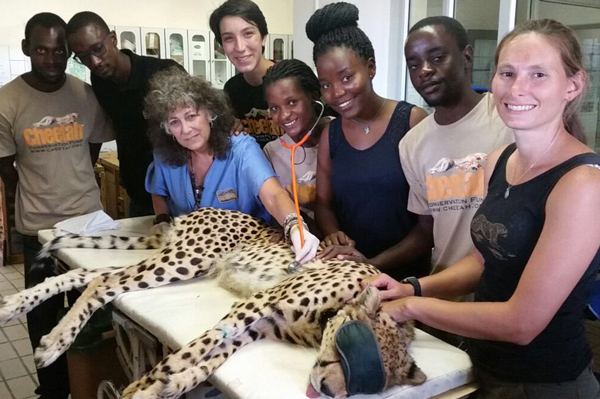
Cheetah protectors want status upgraded from vulnerable to endangered

The wild cheetah population is declining at an alarming rate, prompting conservationists to call upon the International Union for the Conservation of Nature (IUCN) to upgrade its classification from vulnerable to the more serious category of endangered.
“We are sounding a loud warning cry, otherwise we may lose the species during our lifetimes”, said Dr Laurie Marker, Founder and Executive Director of Cheetah Conservation Fund (CCF) and a co-author of a report published on 26 December 2016 in the journal Proceedings of the National Academy of Sciences.
Titled “Disappearing spots: The global decline of cheetah and what it means for conservation,” the paper presents the collated results from cheetah researchers across the species’ range in Africa and the Middle East.
An estimated 7,100 cheetah remain scattered across Africa with a small number (approximately 50 or less) in Iran, the last of the Asian sub-species. This represents more than a 90% drop from 100 years ago when the total population was estimated at 100,000.
The main reason for the dramatic decline is human encroachment, change in land tenure, large scale fencing, political instability and the fact that protected area systems are insufficient for long-term survival. Most wild cheetahs today survive outside protected areas.
According to the paper, because of growing human populations, the cheetah has also lost access to more than 90% of its former range.
Cheetahs, due to their non-aggressive nature, do not fare well in wildlife reserves and other protected areas where other predators steal their prey and kill their young. This brings cheetahs into close contact with farmers and other rural Africans, leading to increased conflict. Close to 70% of the remaining cheetah population is found outside protected areas, with about 50% of the total population resident in southern Africa.
These populations fall into ‘ecological traps’ as human wildlife conflict and habitat fragmentation occurs and higher extinction rates occur outside of protected areas. “For instance in Zimbabwe, an 85% decline of the population has occurred in the past 15 years due to land redistribution and politically instability”, said Dr Marker.
“Cheetahs can reduce in numbers very drastically over a short period of time as predators are more likely to be targeted and removed than smaller species”, said Dr Anne-Schmidt-Kuentzel, CCF’s Research Geneticist and Assistant Director of Animal Health and Research and co-author of the paper. “This fact needs to be taken into consideration when assessing the cheetah’s status”.











































